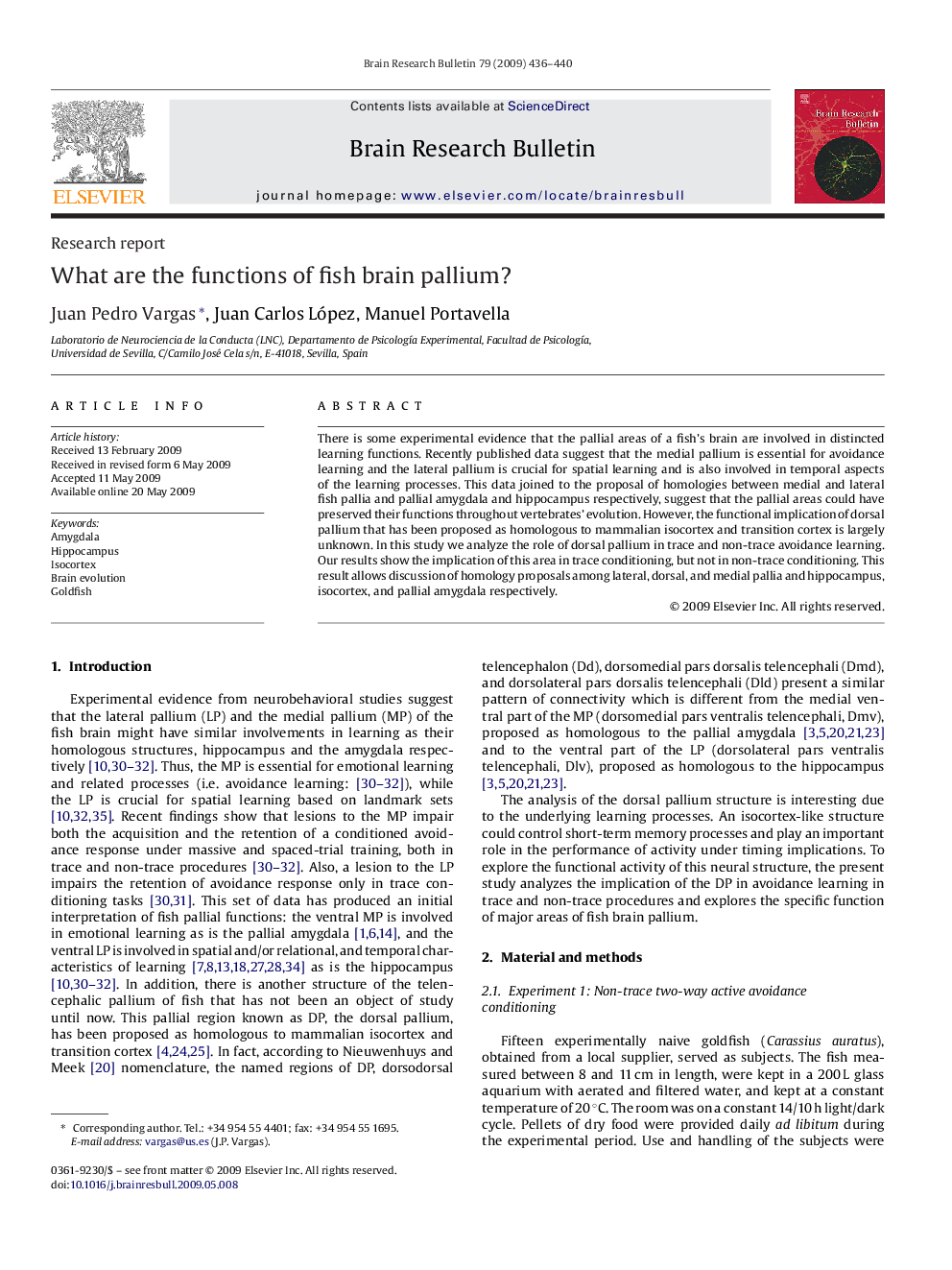| Article ID | Journal | Published Year | Pages | File Type |
|---|---|---|---|---|
| 4319498 | Brain Research Bulletin | 2009 | 5 Pages |
There is some experimental evidence that the pallial areas of a fish's brain are involved in distincted learning functions. Recently published data suggest that the medial pallium is essential for avoidance learning and the lateral pallium is crucial for spatial learning and is also involved in temporal aspects of the learning processes. This data joined to the proposal of homologies between medial and lateral fish pallia and pallial amygdala and hippocampus respectively, suggest that the pallial areas could have preserved their functions throughout vertebrates’ evolution. However, the functional implication of dorsal pallium that has been proposed as homologous to mammalian isocortex and transition cortex is largely unknown. In this study we analyze the role of dorsal pallium in trace and non-trace avoidance learning. Our results show the implication of this area in trace conditioning, but not in non-trace conditioning. This result allows discussion of homology proposals among lateral, dorsal, and medial pallia and hippocampus, isocortex, and pallial amygdala respectively.
